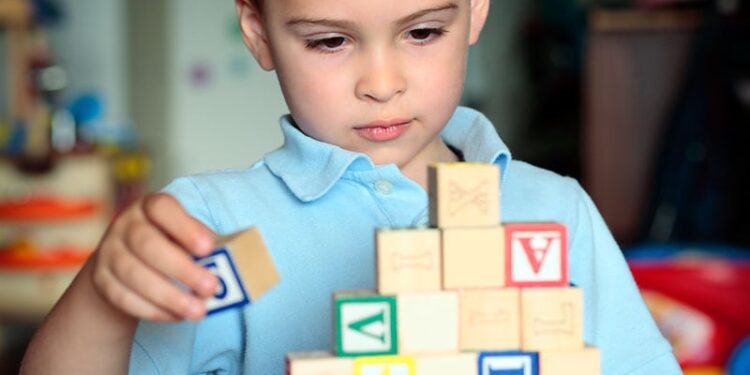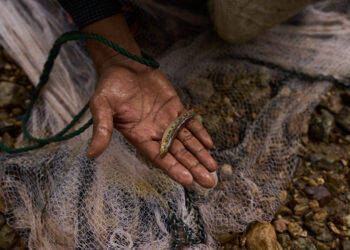By leveraging a person-centered computational approach to phenotypic data from more than 5000 children with autism spectrum disorder (ASD), researchers have identified four biologically and clinically distinct subtypes of autism and their underlying genetic signals.
These four subtypes are: Social and Behavioral Challenges, Mixed ASD with Developmental Delay, Moderate Challenges, and Broadly Affected.
“It’s important for families to have groups where they can really understand how they belong and what kind of prognosis their child might have,” study investigator Olga Troyanskaya, PhD, professor of computer science, Princeton University, Princeton, New Jersey, and deputy director for genomics, Center for Computational Biology, Simons Foundation Flatiron Institute, New York City, told Medscape Medical News.
“There’s very different clinical presentations depending on these subtypes and if you know which subtype a child belongs to you — it’s not yet full precision medicine — but you’d be able to make nontrivial predictions about the prognosis for these children,” she said.
The study was published on July 9 in Nature Genetics.
Unique Research Approach
Patients with ASD exhibit overlapping social and neurocognitive impairment and considerable genetic and phenotypic heterogeneity. However, a coherent mapping of genetic variation to phenotypes is lacking, despite the rising number of ASD diagnoses and hundreds of ASD-associated genes identified in recent years.
Prior studies have either focused purely on clinical or genetic features in relatively small groups or tried to combine them in a trait-centered approach looking for genetic links to single traits, colead author Natalie Sauerwald, PhD, associate research scientist, Flatiron Institute, said in an interview.
What’s different here is the scale and use of a person-centered approach to identify 239 item-level and composite phenotype features in 5392 individuals in the nationwide SPARK cohort. Each feature was then assigned to one of seven phenotype categories defined in the literature (limited social communication, restricted and/or repetitive behavior, attention deficit, disruptive behavior, anxiety and/or mood symptoms, developmental delay, and self-injury) and a general finite mixture model was used to identify and validate the four latent classes.
“As far as we know, this is the first work that was able to combine this person-centered phenotype-first approach with some really surprising genetic findings that align extremely well with these phenotypic results,” Sauerwald said.
Clear Clinical Potential
The four subtypes differ not only in severity of autism symptoms but also in the degree to which co-occurring cognitive, behavioral, and psychiatric concerns factor into their presentation, the researchers noted.
Individuals in the Social and Behavioral Challenges class had greater difficulties across core autism categories of social communication and restricted and/or repetitive behaviors than other autistic children. Developmental delays were not reported but scores were higher for disruptive behavior, attention deficit, and anxiety. This was the largest group with 1976 persons, accounting for 37% of study participants.
The Mixed ASD with Developmental Delays class was highly enriched in language delays, intellectual disability, and motor disorders compared with nonautistic siblings and children in other classes. The 1102 individuals in this group had some features enriched and some depleted with respect to repetitive behaviors and social challenges but had lower levels of attention-deficit/hyperactivity disorder (ADHD), anxiety, and depression. About 19% of participants fell into this class.
Individuals in the Moderate Challenges class showed core autism-related behaviors but less strongly than those in other groups and usually reached developmental milestones at the same pace as nonautistic siblings. This group included 1860 persons or about 34% of participants.
The Broadly Affected class showed significant levels of cognitive impairment, lower language ability, and much earlier ages at diagnosis than the two classes without substantial developmental delays. The group also had significant enrichment in almost all measured co-occurring conditions like ADHD, anxiety, and depression. This was the smallest group with just 554 individuals or about 10% of participants.
“Obviously, this is early and not ready to be rolled out in the clinic this second, but there is clear, immediate clinical potential for these subtypes and then being able to have support services tailored to that group,” Troyanskaya said.
Genetic and Biologic Underpinnings
Children in all four classes had a significant burden of common and rare genetic variants, but researchers found differing signals that defined each autism class. The Broadly Affected class was more likely to have high-impact de novo variants, whereas only the Mixed ASD with Developmental Delays group had a combination of high-impact de novo and rare inherited variants, suggesting a stronger inherited component for children in this group.
The analysis of biological processes affected by high confidence de novo loss of function or damaging missense variations in each class revealed little overlap in the top enriched biological processes and no overlap in top molecular functions between all four classes.
“All of the biological connections were found deep within the framework of what the research has found as far as autism biology,” Troyanskaya said. “But it’s not as much of a spectrum as there is a pie of that biology that is divided between the four subgroups. It’s like we are studying four different subtypes as opposed to one increasing severity condition.”
The four subtypes also differed in terms of the genetic variants’ effects on brain development.
“One very interesting finding regarding the Social and Behavior group that tends to display both high rates of social interaction deficits as well as high anxiety, depression, and ADHD, is that when we looked at which genes were impacted by these mutations, we found for this one group in particular the genes that are impacted are mostly activated after birth,” Aviya Litman, PhD, co-lead author and a PhD student at Princeton, said in an interview.
Notably, children in this subtype rarely have developmental delays and are diagnosed the latest of all the subtypes. The finding that their genetic mutations affect them starting in infancy or childhood rather than during fetal stages closely aligns with both their clinical presentations and the phenotypes that were observed.
“If I had to pick a single finding other than the fact that these subtypes are so robust and different biologically, the single most surprising finding to me is this,” observed Troyanskaya.
Validation and the Steps Ahead
The four subtypes were replicated in 861 individuals in the Simon Simplex Collection (SCC), an autism cohort deeply phenotyped by trained clinicians whereas in SPARK the data were self-reported, Troyanskaya noted. The fraction of children with more severe disorders was also different between cohorts. Still, “we were able to robustly verify this model in an independent SCC cohort,” she said.
The researchers plan to look at differences by sex and race/ethnicity but said it also will be crucial to expand the cohort size and the quality and breadth of the phenotyping to capture the full diversity of the autism population more completely.
While the current work identified four subtypes, “there could be more,” Troyanskaya said. “As we get a bigger cohort, there may be a finer gradation.”
A lot of other autism papers claim their findings have clinical implications, but she said this research is further downstream and doesn’t face technical challenges because it’s phenotype-based classification and these phenotypes are already measured in individuals with autism.
“So you could, in principle, do this but of course a huge part of this is whether the community is looking to adopt it, the community is testing it clinically and understanding what it means for the next stages,” Troyanskaya said.
Sauerwald added that it would be very straightforward for the team to build a tool that could predict a patient’s autism subtype based on data entered by a clinician. “That’s something that could happen very quickly. Again, the technical component will not be the barrier but the widespread adoption and clinical people taking this forward.”
This study was supported in part by the US National Institutes of Health and the Simons Foundation. The authors declared no competing interests.
Source link : https://www.medscape.com/viewarticle/four-biologically-clinically-distinct-autism-subtypes-2025a1000isk?src=rss
Author :
Publish date : 2025-07-16 12:17:00
Copyright for syndicated content belongs to the linked Source.








